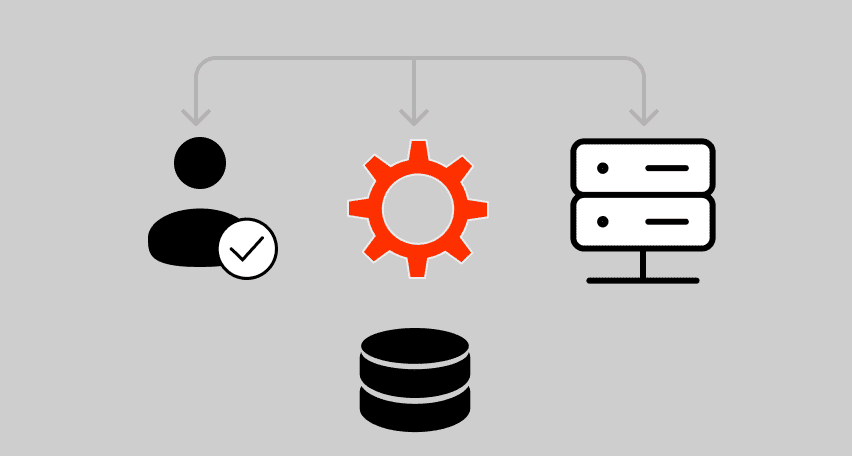Writing a comprehensive and actionable bug report is an essential part of test process management. Unless testers communicate all detected errors effectively and justify objections with data, developers may misunderstand what you meant or outright reject some of the reported bugs.
When this happens, testers contend with developers and waste time arguing. Worse, if a reported bug creeps into the final product, it affects the whole team and members end up shifting the blame on each other.
This is why it’s important to create a comprehensible report that leaves no room for doubt. Developing a well-written bug report requires a combination of good communication skills and testing experience.
In this article, we will provide insights, advice, and tips to help you write bug reports that are informative and actionable, for developers. By following these tips, you provide valuable insights to developers and help them solve bugs effectively.
What Are the Main Features in a Bug Report?
A typical bug report usually follows a simple format. Depending on the bug report tool you are using, this can vary, especially if you must fill in some details manually.
Reporter
Name and email address
Product
The product where you found the bug
Version
The product version where you found the bug
Component
The major sub-modules of the product
Devices
Note down the name of the device where the bug was found
Operating System
List down the names of operating systems where you found the bugs. These may include operating systems such as Linux, Mac OS, Windows, Unix, SunOS, iOS, Android, etc. It’s also important to mention the different versions of the OS.
Priority
We need to set a priority for every detected bug. The priority of every bug needs to be set from P1 to P3:
Severity
Severity illustrates the severity of the bug on the software’s quality.
Status
Every new bug you detect is logged as ‘New’ by default. The bug then goes through various stages depending on which stage it is in. The stages vary from Fixed, Verified, and Reopen, to Won’t Fix.
Assign To
If you are aware of which developer is responsible for a bug in a particular module, you can add it in the developer’s email address. Otherwise, you can keep this form blank so the manager or the module owner can assign the bug to the relevant developer effectively.
Doing so will clear any doubt regarding who is responsible for resolving that particular bug. Including the manager’s email address in the CC list, is also a good idea.
URL
The URL field needs to include the page URL where you found the bug.
Summary
As the name suggests, the summary provides a brief detail of the bug. This must reflect on what the problem is and where we can find its solution, remember to keep it within 60 words or less.
Description
The description section outlines a complete description of the work. You can utilize the following field to define the nature of the bug:
Mention the steps to reproduce the bug.
How the application should behave on the above-mentioned steps.
What is the actual result of running the above steps i.e. the bug behavior?
Report Type
Lastly, you can add the “Report type” to outline the nature of the bug type. You can use either of the following bug types in your report:
7 Best Practices for Writing a Comprehensive Bug Report
Writing a big comprehensive report is not easy especially if you are not familiar with how developers react to different types of bugs.
Provide Context
In some cases, software that was working fine can become extremely buggy over time. This phenomenon is known as bit rot. Although this rarely happens due to actual changes in software, the main reason behind it is the changes in attitudes, behavior, and habits of its users as they evolve.
Because of this, we can see that the buggy nature of software might be a result of two different people using the same software. One person may consider the software’s performance as buggy, whereas the other person might not have similar complaints against it.
As a tester, it’s important to remember this phenomenon as misidentifying, and ‘fixing’ the wrong bug can result in additional costs for the testing team, just because of a simple miscommunication.
This is why you should overcome such misunderstandings by designing a careful statement of the problem at hand. You must provide context to the problem and define it with sensitivity to considering the different perspectives of the audience.
Describe the Problem in Detail
In most cases, it’s usually enough to write two complete sentences to describe the problem in detail. In the first sentence, you can write that “Feature A is showing behavior B when it should exhibit behavior C.” However, we should use the second sentence to clarify what we mean by the first sentence.
For instance, you can say, “Feature X is redirecting new users to the cart, instead of showing them the company’s discount promotion. This happens when we run the web app on Mozilla and Chrome.” To describe larger issues at hand, you can utilize detailed problem statements.
Leverage Screenshots to Illustrate the Problem
Taking screenshots of errors provides a clear picture of what’s happening. They are fundamentally important documents in submitting reported bugs and detailing where we should improve existing features.
Seeing the problem visually can help people understand the problem more effectively, especially if they weren’t able to witness it firsthand. As humans process images faster than words, showing developers a screenshot of the problem minimizes the chances of misinterpretation. This is why most bug reports are considered incomplete if they don’t have screenshots.
Use Numbered Lists to Specify Discrete Actions
Having the ability to reproduce a problem determines how effectively we can resolve it. Not having sufficient information is frustrating for developers and testers alike.
In worst cases, people who try to recreate the problem end up exhausted telling trying to explain the bug. In contrast, original reporters of the error complain that about no one being able to understand what they mean.
This is why it’s best to break down problems into clearly defined, numbered lists. These lists make it immediately obvious regards which steps they must understand, where to begin, and where to end. It also alleviates confusion regarding “minor” distinctions that turn into major faults later on.
To help you understand this here is an example of how we should write a numbered list of discrete actions:
A worse way to write this issue is without a helpful context.
The developer can determine where the problem was on his own. However, in the worst case, he would notice that the background color looks a bit off and he tries to fix the color of the menu instead of addressing the misalignment of the menu.
Similarly, he could sign in as a different user altogether and see a different version of the menu. He may then modify the entire menu section even when no action was needed.
Describe the Expected Resolution in Detail
Testers must also suggest how a certain problem can be fixed. The steps leading to this tell the developer how to understand the nature of the problem and how to reproduce it on his own. Now it’s time to suggest how to resolve the problem without breaking anything else. You also need to verify whether the suggested fix solves the original problem or not.
Usually, it’s sufficient to suggest a solution in two complete sentences. Even small errors result from not implementing software specifications properly. These issues usually stem from misunderstandings and it’s important to write the desired state of a feature while bridging any communication gap.
This is why you should avoid domain-specific acronyms and jargon. Just write down what you want in plain English. Doing so may be more challenging than it seems, but it is definitely worth the effort.
Back Your Reported Bugs with Evidence
As we mentioned, adding screenshots is a great way to illustrate a problem in a bug report. However, there are several other ways to do this to diagnose issues more effectively:
If you are testing a Web application, you can use hyperlinks to point directly to the exact pages in production that must be resolved. For example, utilizing an API load testing tool allows you to test Postman and Insomnia request collections, ensuring optimal scalability and performance. The more data you give to developers, the stronger your case becomes in front of them.
You can use anecdotes about frustrated users effectively to get your message across and help developers understand why fixing a certain bug is important. However, providing the exact location of the error is much more helpful to the developers.
Define the Reported Bug as a Story
Like any good story, your bug report needs to have a beginning, middle, and end. To write a good bug report, you must provide a detailed description of the problem, give clear steps to reproduce it, and suggest what action can resolve the problem.
Testing at PFLB
Writing bug reports is necessary for preventing misunderstandings and the wasted effort resulting from it. By giving a complete narrative of the problem, we can create a good bug report. A comprehensive bug report lays the foundation for everyone involved and allows them to understand the larger, cohesive context and act in an ideal manner.
PFLB has served over 500 companies across all domains, from finance and healthcare to retail and technology since its inception. Being one of the pioneering performance testing service in the industry, we have implemented the accepted set of quality standards across all different projects and industries.
Testers at PFLBs are qualified to write detailed bug reports and communicate underlying issues in applications effectively. Our adherence to the Software Quality Assurance standard has helped us to deliver not only the best-performing solution but also products that fulfill all industry quality requirements.
By trusting their expertise, your business can benefit from core software testing & quality assurance services, and ensure that your products meet industry demands and shine in terms of quality and performance.
Related insights in blog articles
11 API Failure Causes and How To Solve Them

When an API fails, the consequences ripple quickly through the entire system. Transactions stall, integrations break, and frustrated users flood your support channels. Understanding exactly why API failures happen — and how to fix them — is essential for developers and businesses alike. This article examines the most common reasons behind API failures, explores the […]
API Mocking: A Complete Guide

Waiting for APIs to become available or stable can slow down entire projects. API mocking provides a smart way to avoid these roadblocks by simulating real API responses, keeping your teams productive and ensuring smoother integration down the line. In this guide, you’ll discover exactly what API mocking involves, how it differs from using real […]
API Endpoint: A Complete Guide

Modern applications rely heavily on APIs (Application Programming Interfaces) to communicate and exchange data across different systems. At the heart of this interaction lies the API endpoint — a fundamental concept that defines where and how data exchanges happen. This guide explains clearly what an API endpoint is, outlines its importance, and provides practical insights […]
gRPC vs. REST: Detailed Comparison

Choosing between gRPC and REST can feel confusing, especially if you’re trying to figure out the best way for your applications to communicate. This article breaks down the grpc vs rest comparison clearly, without jargon or confusion. You’ll learn exactly what each protocol is, the advantages and disadvantages of each, and understand why gRPC is […]
Be the first one to know
We’ll send you a monthly e-mail with all the useful insights that we will have found and analyzed
People love to read
Explore the most popular articles we’ve written so far
- Top 10 Online Load Testing Tools for 2025 May 19, 2025
- Cloud-based Testing: Key Benefits, Features & Types Dec 5, 2024
- Benefits of Performance Testing for Businesses Sep 4, 2024
- Android vs iOS App Performance Testing: What’s the Difference? Dec 9, 2022
- How to Save Money on Performance Testing? Dec 5, 2022